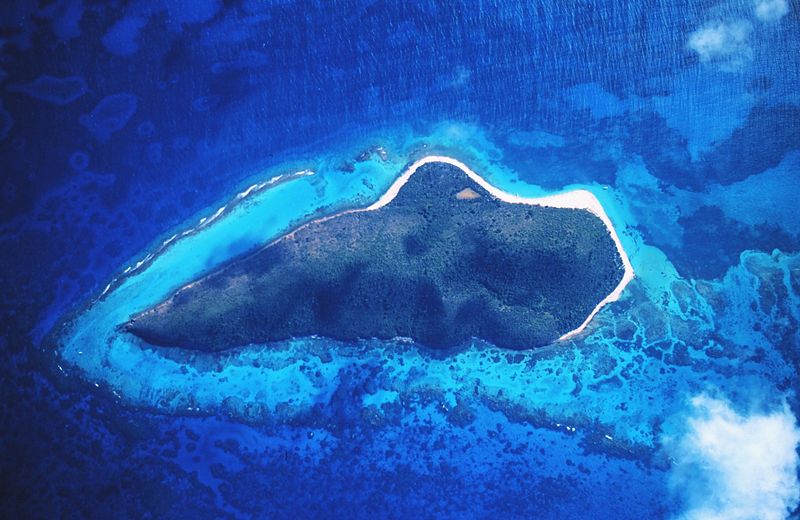Visitors to Buck Island in the next week should enjoy the blue sky and the blue, blue Caribbean water, but stay away from blue on the hiking trails and in the fields.
Until May 4, members of the Buck Island Reef National Monument staff and other members of the Exotic Plant Control Project are spraying herbicides on the island to control and eradicate invasive plant species on the island: the color blue is an indicator that the area has been sprayed and people should stay away.
The Buck Island Reef Exotic Plant Control Project includes park staff and the National Park Service Florida/Caribbean Exotic Plant Management Team, Everglades National Park, based in Homestead, Fla.
A blue dye has been added to the herbicides being used to help visitors easily identify areas that have been treated, according to a news release issued by the National Park Service. Herbicides are applied only when there is sufficient estimated drying time, the announcement added.
Visitors are urged not to travel hiking trails on which blue dye can be seen, and to never touch the target species listed or the soil surrounding them.
Invasive species targeted by the project are: Urochloa maxima (Guinea grass), Leucaena leucocephala (wild tamarind, tan tan), Bromelia penguin (wild pineapple, penguin), Boerhavia erecta (boerhavia), Thespesia populnea (Haiti Haiti, seaside maho), Tecoma stans (cedar Thomas), Melicoccus bijugatus (genip, kenip), Morinda citrifolia (painkiller, noni), Tamarindus indica (tamarind tree), and Aloe vera (aloe).
Woody vegetation is being sprayed with a 30 percent concentration of Garlon 4 (A.I. Triclopyr) in JLB Oil Plus. Urochloa and Boerhavia are being treated with three percent Aquaneat (A.I. Glyphosate) in water.
The treatments are designed to control exotic, non-native, invasive species that threaten the integrity of the tropical dry forest ecosystem and the animal communities that thrive there, according to the news release.
Further information can be obtained by reading the abbreviated final Environmental Impact Statement available online at http://parkplanning.nps.gov/projectHome.cfm?projectID=11115.
Other questions can be directed to the Zandy Hillis-Starr, chief of resource management, (340) 773-1460, or sending e-mail to Zandy_Hillis-Starr@nps.gov.



